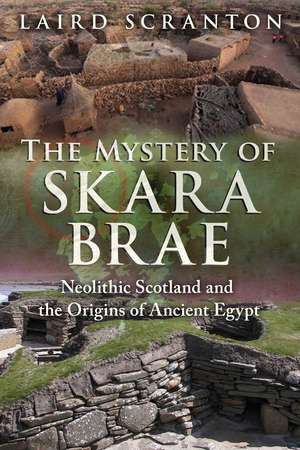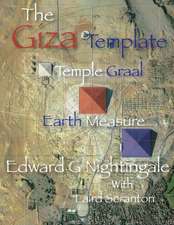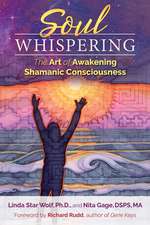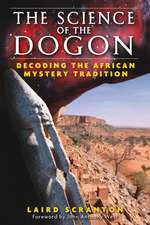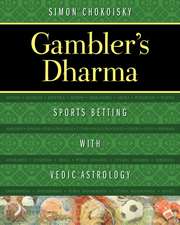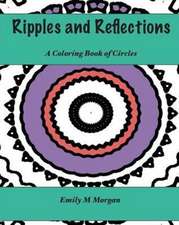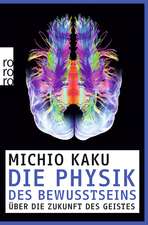The Mystery of Skara Brae: Neolithic Scotland and the Origins of Ancient Egypt
Autor Laird Scrantonen Limba Engleză Paperback – 12 ian 2017
In 3200 BC, Orkney Island off the coast of Northern Scotland was home to a small farming village called Skara Brae. For reasons unknown, after nearly six centuries of continuous habitation, the village was abandoned around 2600 BC and its stone structures covered over--perhaps deliberately, like the structures at Gobekli Tepe. Although now well-excavated, very little is known about the peaceful people who lived at Skara Brae or their origins. Who were they and where did they go?
Drawing on his in-depth knowledge of the connections between the cosmology and linguistics of Egyptian, Dogon, Chinese, and Vedic traditions, Laird Scranton reveals the striking similarities between Skara Brae and the Dogon of Mali, who still practice the same cosmology and traditions they once shared with pre-dynastic Egypt. He shows how the earliest Skara Brae houses match the typical Dogon stone house as well as Schwaller de Lubicz’s intrepretation of the Egyptian Temple of Man at Luxor. He explains how megalithic stone sites near Skara Brae conform to Dogon cosmology, each representing sequential stages of creation as described by Dogon priests, and he details how the houses at Skara Brae also represent a concept of creation. Citing a linguistic phenomenon known as “ultraconserved words,” the author compares words of the Faroese language at Skara Brae, a language with no known origin, with important cosmological words from Dogon and ancient Egyptian traditions, finding obvious connections and similarities.
Drawing on his in-depth knowledge of the connections between the cosmology and linguistics of Egyptian, Dogon, Chinese, and Vedic traditions, Laird Scranton reveals the striking similarities between Skara Brae and the Dogon of Mali, who still practice the same cosmology and traditions they once shared with pre-dynastic Egypt. He shows how the earliest Skara Brae houses match the typical Dogon stone house as well as Schwaller de Lubicz’s intrepretation of the Egyptian Temple of Man at Luxor. He explains how megalithic stone sites near Skara Brae conform to Dogon cosmology, each representing sequential stages of creation as described by Dogon priests, and he details how the houses at Skara Brae also represent a concept of creation. Citing a linguistic phenomenon known as “ultraconserved words,” the author compares words of the Faroese language at Skara Brae, a language with no known origin, with important cosmological words from Dogon and ancient Egyptian traditions, finding obvious connections and similarities.
Preț: 67.34 lei
Preț vechi: 89.09 lei
-24% Nou
Puncte Express: 101
Preț estimativ în valută:
12.89€ • 13.27$ • 10.87£
12.89€ • 13.27$ • 10.87£
Carte disponibilă
Livrare economică 14-26 februarie
Livrare express 25-31 ianuarie pentru 45.84 lei
Preluare comenzi: 021 569.72.76
Specificații
ISBN-13: 9781620555736
ISBN-10: 1620555735
Pagini: 208
Ilustrații: 18 b&w illustrations
Dimensiuni: 152 x 229 x 13 mm
Greutate: 0.34 kg
Editura: Inner Traditions/Bear & Company
Colecția Inner Traditions
ISBN-10: 1620555735
Pagini: 208
Ilustrații: 18 b&w illustrations
Dimensiuni: 152 x 229 x 13 mm
Greutate: 0.34 kg
Editura: Inner Traditions/Bear & Company
Colecția Inner Traditions
Notă biografică
Laird Scranton is the author of a series of books on ancient cosmology and language, including The Science of the Dogon, Point of Origin, and China’s Cosmological Prehistory. He has presented at conferences throughout the United States and is a frequent guest on Red Ice Radio and Coast to Coast AM. He lives in Albany, New York.
Extras
18
Views on the Papae and the Peti
The two cultures known to have been living on Orkney Island in ancient times, identified as the clerical Papae and the pygmy-like Peti, have potential bearing on our outlook on the cosmological history of the region. So far in our discussions, we have outlined several points by which we might favorably compare one of these two groups of ancient inhabitants--the clerics who wore white called the Papae--to the priestly Dogon, or more precisely to predynastic Egyptian ancestors whom we believe to have been contemporaries of the Dogon in the era of 3200 BC.
Since both the earliest Egyptian Pharaohs and the Dogon were descended from Black Africans, and modern Scandinavians are outwardly Caucasian, the most obvious point to look for as confirmation of our outlook would be any overt reference to the Papae in which it is suggested that they may have been of a different race than the Scandinavians. The local tradition in various locales in Northern Scotland such as Caithness is that early inhabitants of the island were black-skinned.
An account given by Herodotus, if we can associate it with Orkney Island based on the geography he cites, tells of a group of men called the Nasamonians who, attempting to follow the outflow of the Nile River in a westerly direction beyond Libya, were captured and carried off by a group of dwarfish men “under middle height” to a land beyond the Pillars of Hercules (Gibraltar), located near the Celts. There the group crossed marshy land to a plain with trees, and to a town inhabited by men of their own stature who were “black complexioned.” The captured men were later able to return safely to their own country. There they described their captors as “a nation of sorcerers.”2
If as we surmise, Orkney Island was created as a ritual training sanctuary and the Dogon, who we take as the Papae, were among the initiates trained there, then the strange pygmy-like Peti stand in the conceptual place of the teachers of the Dogon. One term that the Dogon give to their ancestor/teachers is Nummo. Symbolically, the Dogon associate their teachers with birds and with water. The Dogon priests suggest that their teachers had an actual physical need to be close to water and are described by Marcel Griaule as having deliberately situated themselves near water. Cosmology is closely intertwined with Dogon life, and the term Nummo also carries cosmological meanings that relate to water.
Robert K. G. Temple, in his book The Sirius Mystery, makes the argument that instruction from these mythic teachers constituted an alien contact. We know that both the Dogon and the Buddhists openly assign their “most sacred” knowledge to a non-human source, and that the Dogon describe this source as having been a spiritual one, that was nonphysical or nonmaterial in nature. However, the concerns reportedly expressed by those teachers regarding possible detrimental effects that prolonged contact with them might have on humans imply that there must also have been an actual, physical presence involved, one that would necessarily go beyond mere shamanic insights into some spiritual realm.
Modern researchers are uncertain to whom the term Peti referred, and the consensus opinion is to link them ancestrally to the Picts, an enigmatic and reportedly fierce pygmy tribal group that is known to us from Roman times, some 2,500 years or more after the period of Skara Brae. Beyond this presumed relationship with the ancient Picts of Scotland, a sensible first step toward inferring the possible identity of the Peti would be to again look to related Egyptian words. Budge gives the Egyptian word Peti as the name of a god. The glyphs of the word read “space,” “and earth/matter,” “together,” a meaning that would seem to define the fundamental nature of Dogon contact with their teachers. The word is based on a phonetic root pet that implies the simple question “what?”3 This is the same question that an initiate of the Dogon esoteric tradition is required to continue asking of an informed teacher. From the perspective of the archaic Sakti tradition, through which we trace our instructed cosmology, the word peti could be described in relation to the terms “reveal” or “revelation.”
In that context, it is extremely interesting that Budge defines an Egyptian word for “pygmy” that he pronounces nem.4 The symbols of one spelling for the word can be interpreted to mean “transmitted,” “knowledge,” “spoken”. Another spelling is given simply with a single glyph that is the image of a pygmy. It is also suggestive that the Faroese word nema means “to learn,” and that the Icelandic term for “student” is nemandi.
Budge also lists a second Egyptian word Nemma that he defines as “a man-hawk god, a form of Menu,” whose glyphs define the same pygmy glyph. Budge’s definition calls to mind an enigmatic sculpted hawk-like deity that was found at Gobekli Tepe, and so would associate the term with our archaic matriarchal tradition. This sculpted image, which no hunter-gatherer should have had a worldview to simply imagine, gives Budge’s definition a tangible form and the birds-of-prey symbolism of our archaic tradition a physical rationale. The positioning of the hands of the sculpted hawk-god call to mind the amorphous arms and hands that wrap around the end of the Gobekli Tepe pillars, as if in an embrace.
Yet a third word from Budge that is based on the phonetic root nem, given as nemai, means “island,”5 and so defines the very locale in which we now place the Nemma. The persistent implication is that the ancient group of strange-mannered, sorcerer-like pygmies that were reported to have comported with the Dogon-like clerics on Orkney Island could actually have been the mythic Nummo teachers of the Dogon tradition.
Views on the Papae and the Peti
The two cultures known to have been living on Orkney Island in ancient times, identified as the clerical Papae and the pygmy-like Peti, have potential bearing on our outlook on the cosmological history of the region. So far in our discussions, we have outlined several points by which we might favorably compare one of these two groups of ancient inhabitants--the clerics who wore white called the Papae--to the priestly Dogon, or more precisely to predynastic Egyptian ancestors whom we believe to have been contemporaries of the Dogon in the era of 3200 BC.
Since both the earliest Egyptian Pharaohs and the Dogon were descended from Black Africans, and modern Scandinavians are outwardly Caucasian, the most obvious point to look for as confirmation of our outlook would be any overt reference to the Papae in which it is suggested that they may have been of a different race than the Scandinavians. The local tradition in various locales in Northern Scotland such as Caithness is that early inhabitants of the island were black-skinned.
An account given by Herodotus, if we can associate it with Orkney Island based on the geography he cites, tells of a group of men called the Nasamonians who, attempting to follow the outflow of the Nile River in a westerly direction beyond Libya, were captured and carried off by a group of dwarfish men “under middle height” to a land beyond the Pillars of Hercules (Gibraltar), located near the Celts. There the group crossed marshy land to a plain with trees, and to a town inhabited by men of their own stature who were “black complexioned.” The captured men were later able to return safely to their own country. There they described their captors as “a nation of sorcerers.”2
If as we surmise, Orkney Island was created as a ritual training sanctuary and the Dogon, who we take as the Papae, were among the initiates trained there, then the strange pygmy-like Peti stand in the conceptual place of the teachers of the Dogon. One term that the Dogon give to their ancestor/teachers is Nummo. Symbolically, the Dogon associate their teachers with birds and with water. The Dogon priests suggest that their teachers had an actual physical need to be close to water and are described by Marcel Griaule as having deliberately situated themselves near water. Cosmology is closely intertwined with Dogon life, and the term Nummo also carries cosmological meanings that relate to water.
Robert K. G. Temple, in his book The Sirius Mystery, makes the argument that instruction from these mythic teachers constituted an alien contact. We know that both the Dogon and the Buddhists openly assign their “most sacred” knowledge to a non-human source, and that the Dogon describe this source as having been a spiritual one, that was nonphysical or nonmaterial in nature. However, the concerns reportedly expressed by those teachers regarding possible detrimental effects that prolonged contact with them might have on humans imply that there must also have been an actual, physical presence involved, one that would necessarily go beyond mere shamanic insights into some spiritual realm.
Modern researchers are uncertain to whom the term Peti referred, and the consensus opinion is to link them ancestrally to the Picts, an enigmatic and reportedly fierce pygmy tribal group that is known to us from Roman times, some 2,500 years or more after the period of Skara Brae. Beyond this presumed relationship with the ancient Picts of Scotland, a sensible first step toward inferring the possible identity of the Peti would be to again look to related Egyptian words. Budge gives the Egyptian word Peti as the name of a god. The glyphs of the word read “space,” “and earth/matter,” “together,” a meaning that would seem to define the fundamental nature of Dogon contact with their teachers. The word is based on a phonetic root pet that implies the simple question “what?”3 This is the same question that an initiate of the Dogon esoteric tradition is required to continue asking of an informed teacher. From the perspective of the archaic Sakti tradition, through which we trace our instructed cosmology, the word peti could be described in relation to the terms “reveal” or “revelation.”
In that context, it is extremely interesting that Budge defines an Egyptian word for “pygmy” that he pronounces nem.4 The symbols of one spelling for the word can be interpreted to mean “transmitted,” “knowledge,” “spoken”. Another spelling is given simply with a single glyph that is the image of a pygmy. It is also suggestive that the Faroese word nema means “to learn,” and that the Icelandic term for “student” is nemandi.
Budge also lists a second Egyptian word Nemma that he defines as “a man-hawk god, a form of Menu,” whose glyphs define the same pygmy glyph. Budge’s definition calls to mind an enigmatic sculpted hawk-like deity that was found at Gobekli Tepe, and so would associate the term with our archaic matriarchal tradition. This sculpted image, which no hunter-gatherer should have had a worldview to simply imagine, gives Budge’s definition a tangible form and the birds-of-prey symbolism of our archaic tradition a physical rationale. The positioning of the hands of the sculpted hawk-god call to mind the amorphous arms and hands that wrap around the end of the Gobekli Tepe pillars, as if in an embrace.
Yet a third word from Budge that is based on the phonetic root nem, given as nemai, means “island,”5 and so defines the very locale in which we now place the Nemma. The persistent implication is that the ancient group of strange-mannered, sorcerer-like pygmies that were reported to have comported with the Dogon-like clerics on Orkney Island could actually have been the mythic Nummo teachers of the Dogon tradition.
Cuprins
Introduction Some Thoughts on Comparative Cosmology 1 A Brief History of Skara Brae 2 Footholds to a Theory of Origin for Skara Brae 3 Reexamining Skara Brae in Overview 4 Comparing Skara Brae and Dogon Structures 5 Dogon, Egyptian, and Faroese Words of Cosmology 6 Cosmological Sites of the Orkney Region 7 The Dogon Field of Arou 8 The Field of Arou and the Elysian Fields 9 Further Correlations to Faroese Words 10 Argat: An Ancient Name for Orkney Island 11 Orkney Island as an Archaic Sanctuary 12 The Overthrown Boat 13 Reconsidering Possible Roles for Orkney Island 14 The Emergence of Dynastic Egypt 15 The Advent of the Egyptian Hieroglyphs 16 Correlating Regional Kingships at 3000 BCE 17 Seshat and the Egyptian House of Life 18 Views on the Papae and the Peti 19 Words of the Scottish-Gaelic Language 20 The Druids and Other Pieces of the Puzzle 21 The Hindu Parable of the Seven Houses 22 The Egyptian Tale of the “Seven Houses in the Other World” 23 Conclusions and Observations Notes Bibliography Index
Recenzii
“Antiquarian scholar Laird Scranton has done it again. In his latest book, The Mystery of Skara Brae, he takes the reader to one of the most remote locations in the British Isles, then proceeds to lay out the heretofore unknown story of a well-organized yet mysterious culture that flourished off the western coast of Scotland, only to decamp forever around 2600 BCE. Who were the inhabitants of Skara Brae, and what connection did they have with the peoples who went on to create ancient Egypt? What knowledge did they share with the ancient African tribe the Dogon? Where did they come from, and to where did they disappear? Scranton guides us through time and tradition in an account that both novices and scholars will embrace. . . . marvelous and highly educational. I would recommend it unhesitatingly to anyone interested in ancient mysteries.”
“If you are interested in ancient mysteries, then you must read the writings of Laird Scranton. . . . The Mystery of Skara Brae is a welcome addition to his amazing library of work. Connections between ancient cultures that would not seem to be related at first glance have long fascinated me, and no one explores these connections better than Laird, both in his scholarship and level of detail. If you want to explore the evidence on the eerie similarities between ancient civilizations, get your copy of The Mystery of Skara Brae today.”
“If you are interested in ancient mysteries, then you must read the writings of Laird Scranton. . . . The Mystery of Skara Brae is a welcome addition to his amazing library of work. Connections between ancient cultures that would not seem to be related at first glance have long fascinated me, and no one explores these connections better than Laird, both in his scholarship and level of detail. If you want to explore the evidence on the eerie similarities between ancient civilizations, get your copy of The Mystery of Skara Brae today.”
Descriere
An investigation of the origins of the Neolithic farming village on Orkney Island
